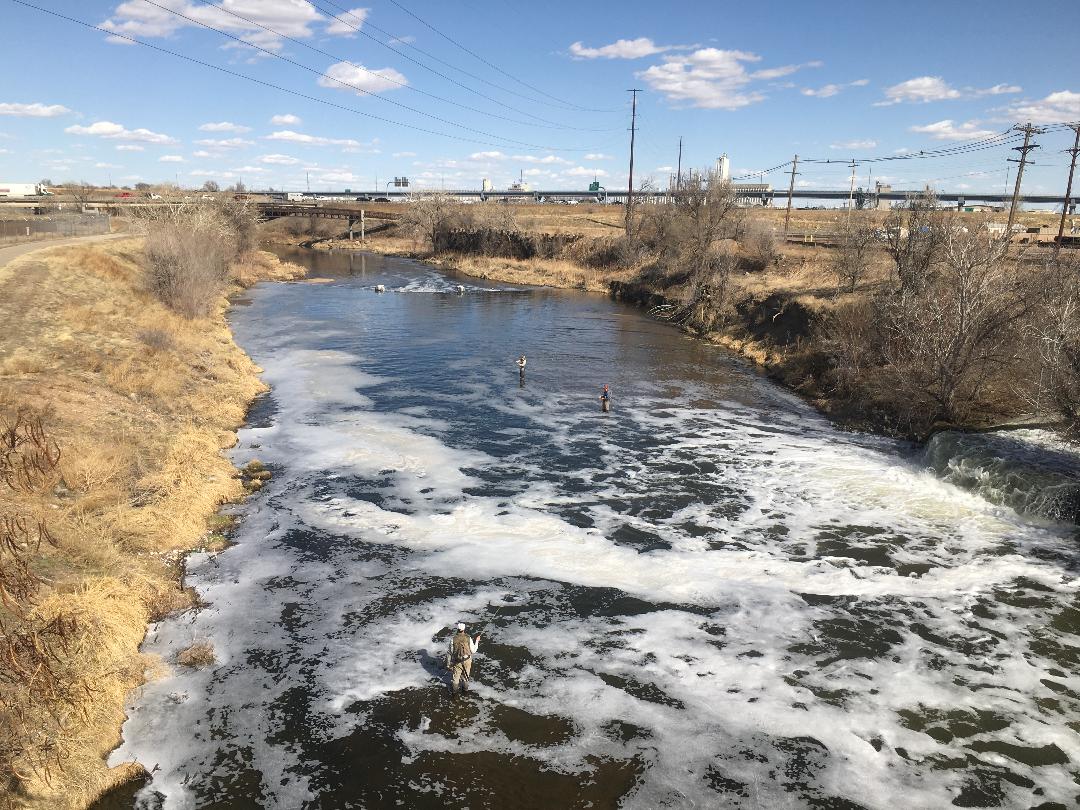Aquatic diversity in the South Platte River continues to improve with the help of wastewater treatment upgrades and environmental work, according to Metro Water Recovery’s recently released 2022 Water Quality Report.
The water Metro recovers, treats and releases to the South Platte River accounts for 85% of the river’s flow for more than three-quarters of the year. After a decades-long habitat improvement project — among other innovations and initiatives — native fish and aquatic macroinvertebrates are thriving in the South Platte.
Metro has been monitoring the South Platte River from Denver to Platteville for more than 50 years, providing reliable data to support regulatory policies and plant upgrades with the mission of protecting the region’s health and environment.

Anglers fish in the outfalls of the Robert W. Hite Treatment Facility.
“When effluent quality is improved, there is often a corresponding and significant positive response in the biological health of the downstream aquatic communities,” said Jordan Parman, senior water quality scientist for Metro.
Total phosphorus and nitrogen concentrations in the South Platte River downstream of Metro’s outfalls continue to decrease, showing the effectiveness of treatment plant upgrades over the past four decades. Enhanced biological nutrient removal is having a noticeable positive impact on the waterways and reservoirs downstream.
Encouraging aquatic life improvements in the river are thanks in large part to drastic reductions of in-stream ammonia concentrations. Since its completion a decade ago, a $211 million secondary treatment project decreased ammonia concentrations in the South Platte River downstream from the Robert W. Hite Treatment Facility (RWHTF) outfalls from an average of 4.9 mg/L in 2013 to 0.5 mg/L in 2022.
“Correspondingly, the macroinvertebrate community composition immediately downstream of the RWHTF outfalls shifted from tolerant taxa like midges and aquatic worms to a more diverse community including sensitive taxa such as mayflies and caddisflies,” Parman said.

A blue heron enjoys the waters of the South Platte River near Metro Water Recovery’s treatment facility.
Metro successfully switched our largest treatment plant from a chlorine-based disinfection system to one using peracetic acid addition. The change was driven by several factors, including a desire to eliminate the generation of disinfection by-products in the final effluent and river.
“Recognizing that salinity is quickly becoming an issue of concern throughout the South Platte Basin, Metro is dedicated to limiting chemical usage wherever possible in the treatment process in order to limit the amount of salts reaching the river via effluent discharge,” Parman said.
Metro continues to pursue innovative technologies to improve effluent quality and the overall health of the South Platte River, including the implementation of full-scale biological phosphorus removal and a partnership at the National Western Complex to build one of the largest sewer heat recovery systems in North America.
“Metro staff will continue to assess the physical, chemical and biological condition of the South Platte River into the future, just as we have since 1972 as stewards of one of Colorado’s most precious resources,” Parman said.
Visit Metro’s website to learn more about efforts and initiatives to preserve and protect the South Platte, along with access to Metro’s water quality and monitoring data.








